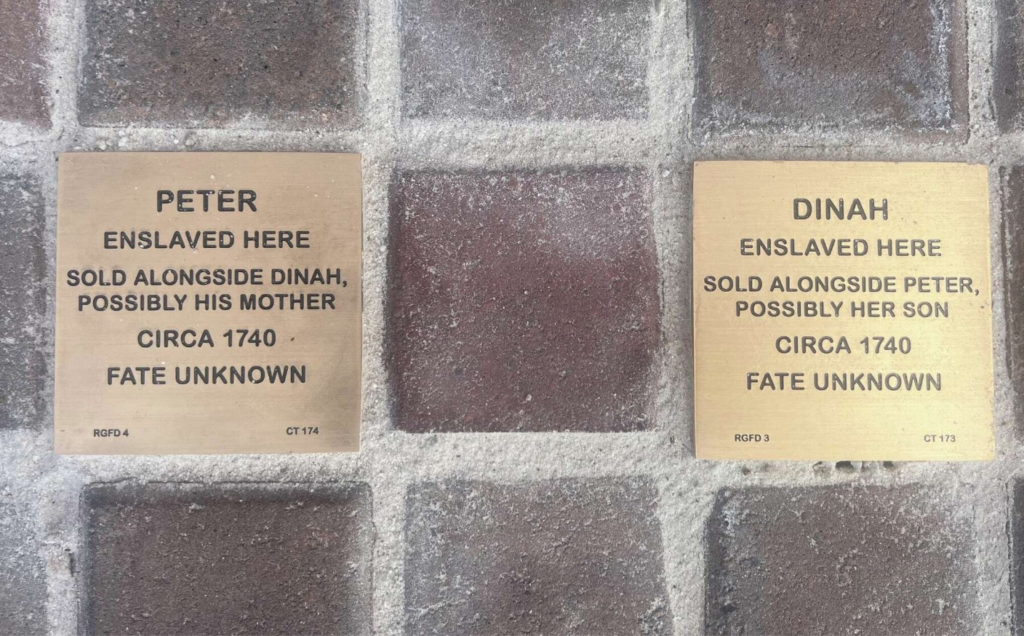
By Kendra Baker in the Ridgefield NewsTimes on December 10, 2023
RIDGEFIELD — The lives of two individuals enslaved in town in the 18th century have been memorialized and remembered as “undeniably human” as part of an ongoing student-led research project.
“Their names were Peter and Dinah,” a local eighth grader said during a Nov. 15 ceremony outside the Ridgefield Historical Society, where plaques honoring the two former slaves were recently placed. “Both were enslaved in this very town. Neither had any reason to be enslaved, but they were. They were undeniably human, but they weren’t treated as such.”
The ceremony followed weeks of research by eighth graders from East Ridge and Scotts Ridge middle schools, in partnership with the historical society and the Witness Stones Project. It was all part of a project-based learning experience that allows students to honor former enslaved residents whose stories have not been fully told.
Plaques commemorating Dinah and Peter were placed next to two installed last year in honor of Lidia and Quash outside the David Scott House, which serves as the Ridgefield Historical Society’s headquarters.
Dinah, Peter, Lidia and Quash were some of the enslaved people known to have been held captive in the house originally built and owned by David Scott, an Irish immigrant and patriarch of one of Ridgefield’s founding families.
The house, which originally stood at the southwest corner of Catoonah and Main streets, was relocated to face Catoonah Street in the 1920s before it was dismantled in 1999 and reconstructed at its current location at 4 Sunset Lane.
The eighth-graders started working on this year’s Witness Stones Project at the beginning of the school year and found that the records of Dinah and Peter were very limited, Ridgefield Historical Society collections manager Betsy Reid said.
“The only document we have that proves they even lived here is a bill of sale dated 1740, when David Scott sold Dinah and Peter to a man named Vivus Dauchy … for 200 English pounds,” she said.
The students weren’t able to dig deeper into the personal lives of Dinah and Peter due to a lack of records, but they did learn about the institution of slavery — which several of them spoke to during the ceremony last month at the historical society.
“Slavery (is) a lifetime of suffering, sorrow and injustice, and this is why we need to honor the lives and legacies of enslaved people,” one student said at the event.
Through the Witness Stones Project, the student said she and her peers “got a glimpse of how horrendous the life of an enslaved person really was.”
“A typical day for Dinah was very different from our life in Ridgefield today,” she said. Some of the work Dinah would have been forced to do included washing, drying and ironing the clothes of her enslaver, carrying “large heavy jugs of water from the kitchen throughout the day,” as well as caring for many children, the student said.
“We can infer that Dinah had to take care of over 13 children, which were most of those of her enslaver,” she said, noting that enslaved people were also sometimes forced to work and live in unhealthy conditions.


